Length: 650m
Runway: 12/30
Elevation: 1750ft
Probably the furthest destination I go to from Malinau and not the most challenging to land on but set in an open valley, along the side of a river, Mahak Baru’s still rather pretty to fly into. There’s a little bit of terrain surrounding the airstrip which means only descending if you’re visual. Most mornings, low lying cloud/fog can make this impossible but it’ll normally lift and burn off enough for a safe approach if you time your arrival for mid-morning. Mahak’s one of the only airstrips that offers cell phone coverage, so you can always call someone there before departing Malinau to check the weather.
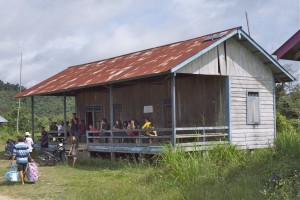 |
| The terminal building |
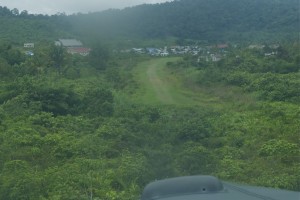 |
| Short finals, the bend quite noticeable here |
As the valley’s pretty open, I normally choose to overfly the airstrip to take a look and see what the wind’s doing (there’s a small windsock mid-way along the strip). This also gives the locals a heads up that an aircraft is arriving and allows them to try and get people, dogs etc. off the airstrip. You can land in either direction but I favour landing towards the village which offers a later go-around option as the high terrain is a little further away. This does mean you have to thread the aircraft through the lowest bit of terrain/trees at the other end in order to make the touch down as early into the airstrip as possible. If you’ve ever landed at Popham airfield in the UK, it’s a similar affair here with a curved approach between the trees.
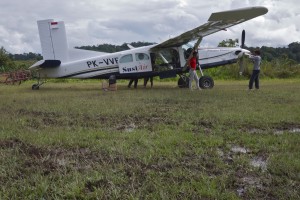 |
| The “apron” |
A positive touch down is best along with a squirt of reverse thrust to get the speed under control as quickly as possible. Once slow enough it’s just a matter of disengaging the tailwheel lock and taxing off the strip to the side by the terminal building/hut. I could call it an apron but that would be generous. The trick when taxiing on mud is to keep your momentum going. Two and a half tonnes of aircraft can very easily get stuck if you allow it come to a full stop on very soft ground.
Again, I favour departing towards the village to allow a safer climb out. This requires a slightly longer backtrack from the “apron” which gives you another chance to ensure the strip’s clear before you take-off. Due to the bumpiness of the strip, I use a max performance take-off. Once the power has been set, I then tighten the throttle lever friction up so it can’t slip back with the bumps. I’ve learnt from past experiences that trying to hold the lever whilst guiding the aircraft along a bumpy strip requires too much in-cockpit time to check the engine torque hasn’t slipped back.
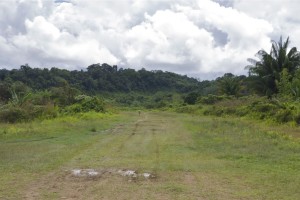 |
| Looking down the strip towards the touch down point |
During the take-off roll it’s a matter giving it a little more right rudder pedal to allow for the torque of the engine and to steer the aircraft along the curve in the airstrip. Once airborne a right turn allows you to steer away from the village and terrain for a climb out over the river and lower terrain. You’ve always got to be thinking about what to do if the engine quits on you in a single.
Everything written in this article are opinions of the author and should not be taken as sole reference for attempting a flight into or out of the aforementioned airstrip.
Discover more from Matt Dearden
Subscribe to get the latest posts sent to your email.
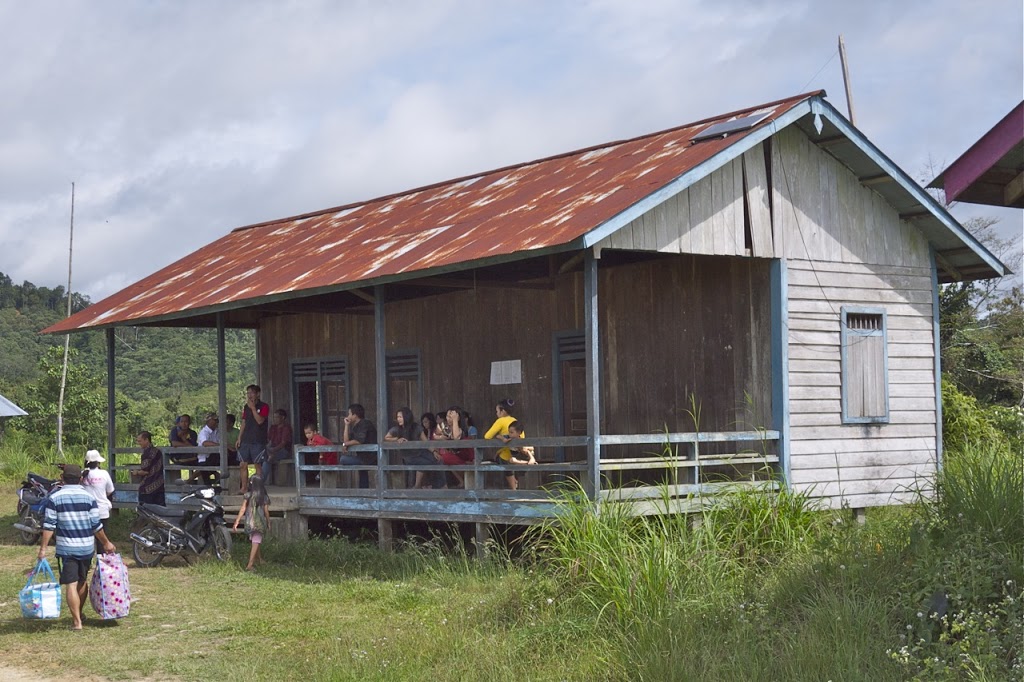
looks awesome bro.
Cheers chap. I’ll start adding in some info on the more tricky strips soon. I’ve also got loads of Go-Pro video too but my cellphone internet connection isn’t going to cope with uploading them from Malinau.
Amazing!!!!! And it’s wonderful to have the video too while reading the article! 🙂
Thanks! It’s certainly good fun :o)